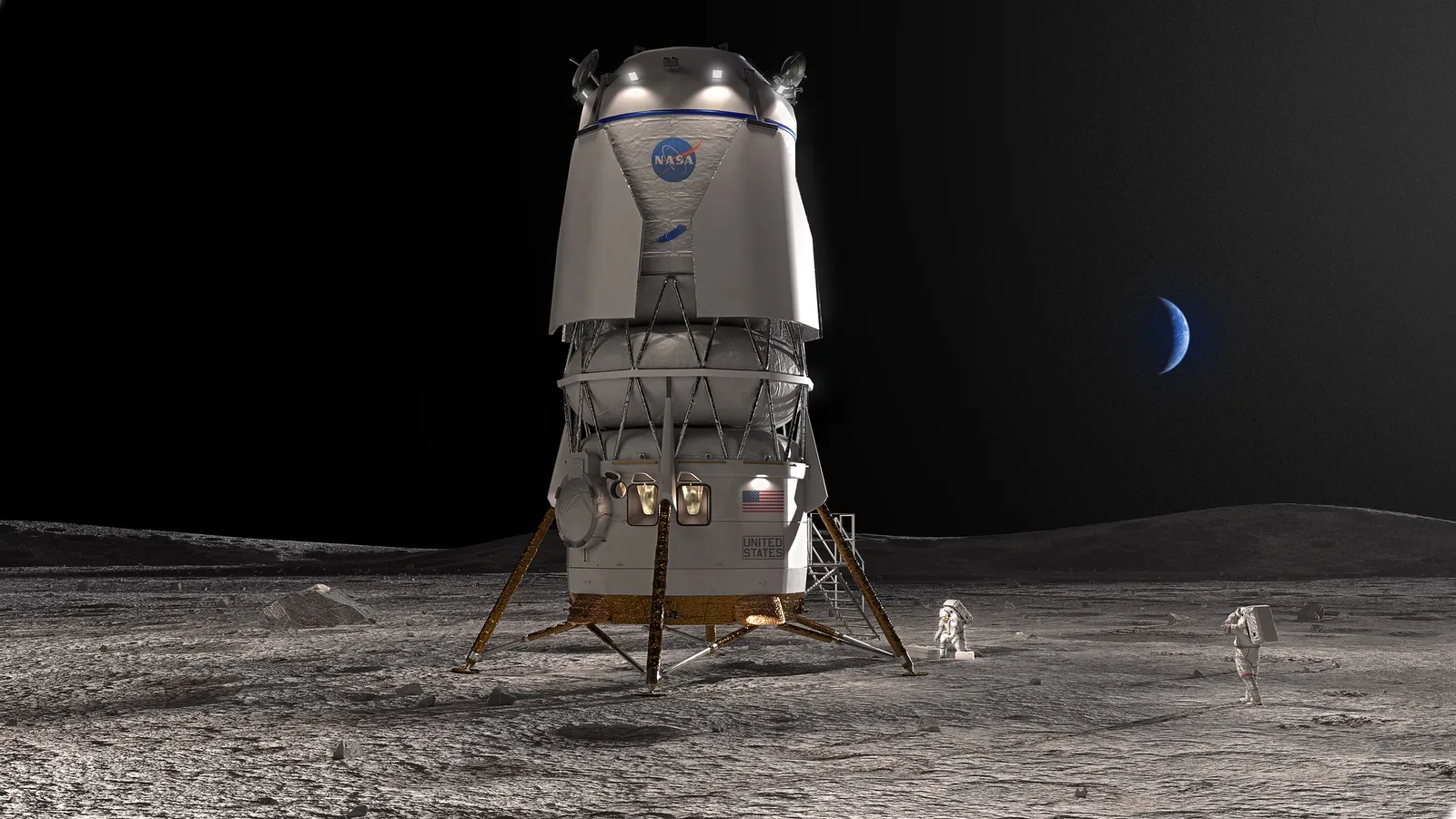In a significant step towards advancing human space exploration, Blue Origin is making substantial progress in developing a human landing system (HLS) for NASA’s Artemis program, which aims to return humans to the Moon and establish a sustainable presence there as a precursor to future Mars missions.
Key Highlights:
- Blue Origin, along with its partners, is developing the Blue Moon lander for NASA’s Artemis missions.
- The Blue Moon lander is designed to support both cargo and crew missions to the lunar surface, with capabilities for large payloads.
- Blue Origin’s New Glenn rocket is set to play a crucial role in launching the lunar lander.
- The development includes innovative technologies like the BE-7 engine, capable of multiple restarts and high efficiency, indicating significant advancements in propulsion technology.
- Blue Origin’s collaboration with Lockheed Martin, Northrop Grumman, and others aims to enhance lunar exploration capabilities and support sustainable exploration efforts.
Developing Artemis’ Human Landing System
NASA has selected Blue Origin, among other companies, to design and develop human landing systems for its ambitious Artemis program. The goal is to land the next astronauts on the Moon by 2024, marking a significant milestone in sustainable human exploration of the lunar surface. Blue Origin’s proposal involves the Blue Moon lander, which is a part of NASA’s strategy to establish a long-term human presence on the Moon and pave the way for future manned missions to Mars.
Blue Moon Lander: A Versatile Exploration Vehicle
The Blue Moon lander, designed by Blue Origin, is a versatile spacecraft capable of supporting both cargo and crew missions to the Moon’s surface. Its development is a collaborative effort involving several key industry partners, each contributing unique technologies and capabilities. For instance, Astrobotic is providing a cargo accommodation system, Boeing is supplying a docking system, and Draper is responsible for guidance, navigation, and control technology. This integrated approach ensures the Blue Moon lander’s capability to carry large payloads, including surface habitats and lunar rovers, to support sustained human presence and exploration activities.
Innovations in Propulsion: The BE-7 Engine
A critical component of the Blue Moon lander is the BE-7 engine, designed for high efficiency and the ability to restart multiple times, making it ideal for complex lunar missions. The BE-7’s use of liquid oxygen and liquid hydrogen as propellants is noteworthy, as these can potentially be sourced from lunar ice, thus supporting future in-situ resource utilization strategies. This engine exemplifies Blue Origin’s commitment to advancing propulsion technology for sustainable space exploration.
Enhancing Lunar Exploration Capabilities
The development of the Blue Moon lander and its associated technologies represents a significant step forward in lunar exploration capabilities. By partnering with NASA on the Artemis missions, Blue Origin and its collaborators are not only aiming to return humans to the Moon but also to lay the groundwork for more ambitious missions to Mars and beyond. The collaboration leverages the expertise of industry leaders to drive innovation, reduce costs, and establish a commercial basis for lunar exploration, thereby expanding access to space and fostering a lunar economy.
Blue Origin’s efforts in developing a human landing system for the Artemis missions signify a pivotal moment in space exploration. By bringing together a consortium of industry experts and leveraging innovative technologies like the BE-7 engine, Blue Origin is contributing to the foundation of sustainable human presence on the Moon. This endeavor not only prepares the way for future explorations of Mars but also opens new avenues for scientific discovery and commercial opportunities in space, underscoring the importance of public-private partnerships in advancing human exploration of the cosmos.



















